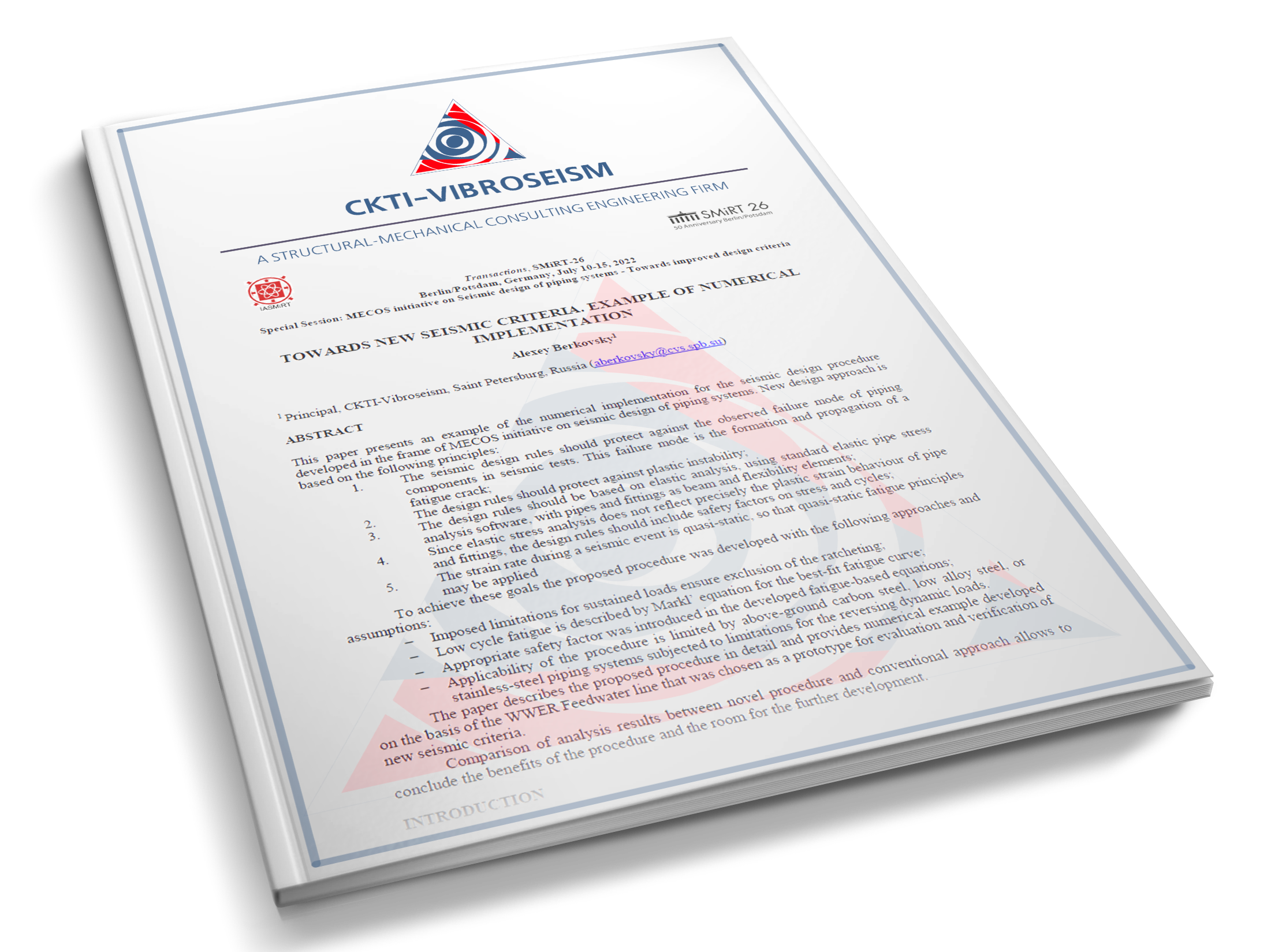TOWARDS NEW SEISMIC CRITERIA. EXAMPLE OF NUMERICAL IMPLEMENTATION
Transactions, SMiRT-26, Special Session: MECOS initiative on Seismic design of piping systems - Towards improved design criteria. Berlin/Potsdam, Germany, July 10-15, 2022

- Autors: : Берковский А.М. [Alexey M. Berkovskiy]
- Publisher: English
- N°: 48
- Library: Conference Papers
- Year: 2022
- File: tu3f5
Hits: 2463
This paper presents an example of the numerical implementation for the seismic design procedure developed in the frame of MECOS initiative on seismic design of piping systems. New design approach is based on the following principles:
1. The seismic design rules should protect against the observed failure mode of piping components in seismic tests. This failure mode is the formation and propagation of a fatigue crack;
2. The design rules should protect against plastic instability;
3. The design rules should be based on elastic analysis, using standard elastic pipe stress analysis software, with pipes and fittings as beam and flexibility elements;
4. Since elastic stress analysis does not reflect precisely the plastic strain behaviour of pipe and fittings, the design rules should include safety factors on stress and cycles;
5. The strain rate during a seismic event is quasi-static, so that quasi-static fatigue principles may be applied
To achieve these goals the proposed procedure was developed with the following approaches and assumptions:
− Imposed limitations for sustained loads ensure exclusion of the ratcheting;
− Low cycle fatigue is described by Markl’ equation for the best‐fit fatigue curve;
− Appropriate safety factor was introduced in the developed fatigue-based equations;
− Applicability of the procedure is limited by above-ground carbon steel, low alloy steel, or stainless-steel piping systems subjected to limitations for the reversing dynamic loads.
The paper describes the proposed procedure in detail and provides numerical example developed on the basis of the WWER Feedwater line that was chosen as a prototype for evaluation and verification of new seismic criteria. Comparison of analysis results between novel procedure and conventio
 CKTI-Vibroseism Ltd.
CKTI-Vibroseism Ltd. 
